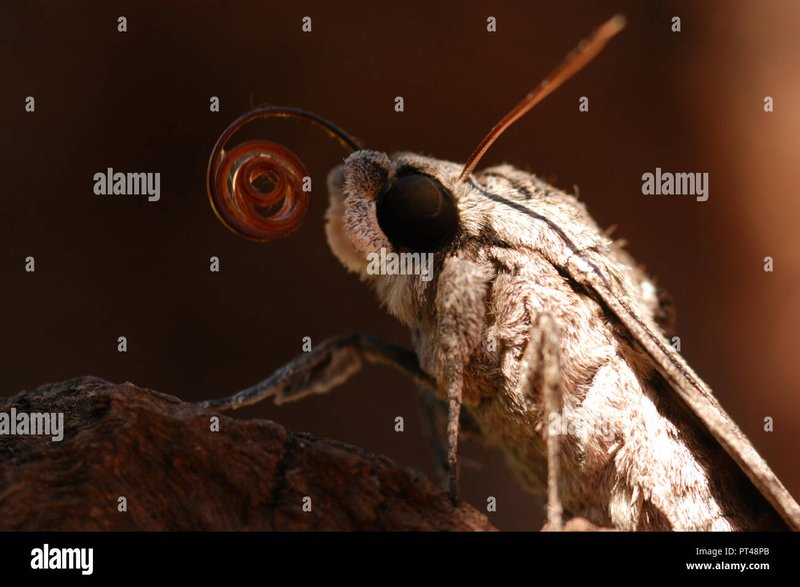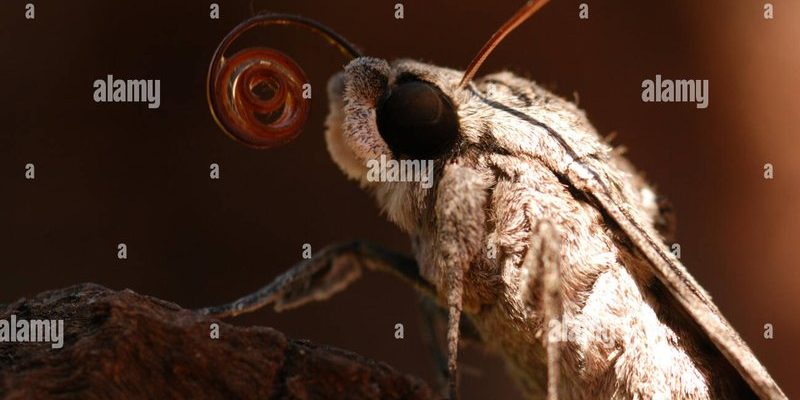
Imagine a caterpillar—soft, squishy, and often camouflaged within lush leaves. While hornworms might not win any beauty contests in their caterpillar form, their transformations are quite the sight. Think of it as a staircase leading to something much grander. In this case, it’s the moths that flutter around your garden, adding a bit of magic to a scene that might otherwise be a pest parade. So, who are these moths, and how do they come into being? Let’s explore!
What Are Hornworms?
Before we get into the moths they become, it’s important to know what hornworms really are. Hornworms are the larval stage of certain moth species, particularly the *Manduca sexta*, commonly known as the tobacco hornworm, and the *Manduca quinquemaculata*, or the five-spotted hawk moth. These caterpillars can grow quite large—up to 4 inches long—and they have a distinct horn-like spike on their tails, which is where they get their name.
You might be wondering why they’re so famous among gardeners. It’s simple: they love to snack on tomato plants, eggplants, and peppers, making them a gardener’s nightmare. Their voracious appetite can turn a flourishing garden into a skeleton of wilted leaves. Despite their destructive tendencies, hornworms play an essential role in the ecosystem, serving as food for birds and other predators.
In their quest for survival, hornworms will eventually stop feeding and migrate to the soil, where they create a cozy cocoon. This is where the magic happens. Once transformed, they become beautiful moths, ready to take on the skies.
The Tobacco Hornworm Moth
One of the most common moths that emerge from hornworms is the **tobacco hornworm moth**. After spending time in the soil, these caterpillars metamorphose into large, brownish-gray moths with striking patterns. The adult moths feature a wingspan of 4 to 5 inches, with yellow and green markings that help them blend into their surroundings.
You might notice them zooming around your garden, usually in the evening or at night. They’re known for their strong, fast flight, which can sometimes make them look more like a hummingbird than a moth. Honestly, spotting one can be a bit of a treat, especially if you’re into wildlife. Their pollinator role is just as important as their larval stage, with many plants benefiting from their nighttime visits.
In addition to their beauty, these moths are essential for the ecosystem. Their larvae help provide a food source for birds, while the adult moths contribute to pollination, allowing plants to flourish. It’s a reminder of how interconnected nature is, and how even our “enemies” can have a purpose.
The Five-Spotted Hawk Moth
Another notable moth that stems from hornworms is the **five-spotted hawk moth**. This species is often mistaken for the tobacco hornworm moth, but there are some key differences to note. This moth is also known for its sizeable wingspan—up to 5 inches long—featuring a color palette of dark brown and gray with striking yellow spots on its lower wings.
What makes the five-spotted hawk moth particularly interesting is its life cycle. These moths undergo a similar metamorphosis as the tobacco hornworm. However, they often prefer to feed on different plants, like potatoes and certain weeds, adding a multifaceted layer to their behavior. You might even find them fluttering around brightly lit areas, attracted by lights.
The five-spotted hawk moth is known for its exceptional flying abilities. They can often be seen hovering in place while feeding, much like a hummingbird. This skill not only looks impressive but is also vital for pollination.
Life Cycle of Hornworms and Their Moths
So, how does the whole process work? After hornworms feed to their heart’s content, they dig down into the soil to pupate. During this stage, they undergo a complete transformation. From the outside, it may seem like nothing is happening, but inside, these little guys are changing entirely. Think of it like a secret transformation, with the caterpillar shedding its old self to become something entirely new.
This metamorphosis can take about two to three weeks. Once they’re ready, they emerge as adult moths, breaking free from their cocoons. At this point, they’re quite vulnerable and need to find food and, eventually, mates to continue the cycle. Here’s the thing: this is why it’s essential to manage hornworms in your garden. If left unchecked, they can reproduce rapidly, leading to a cycle of pests.
Timing plays a crucial role in this life cycle. Depending on the climate and environment, these moths can show up throughout the summer and fall months. Gardeners often find themselves wrestling with not just the caterpillar stage but also the burgeoning population of moths in the evenings.
Why Should We Care About Moths?
You might be asking yourself, “Why put so much emphasis on these moths?” Well, here’s the thing—moths are often overlooked, but they play a vital role in maintaining ecological balance. They serve as **pollinators**, transferring pollen from one flower to another, which is essential for plant reproduction. In fact, some plants can only be pollinated by specific moth species!
Furthermore, moths are a key food source for various animals, particularly bats and birds. Their presence in the ecosystem supports a healthy food chain. If we start to lose these insects—whether due to pesticides, habitat loss, or other factors—we could face a ripple effect that impacts many other species.
Plus, observing moths can be a joyful experience. They’re enchanting little creatures that can ignite curiosity and appreciation for nature’s wonders. If you spend some time in your garden at dusk, you might just find yourself captivated by their gentle movements.
Common Problems with Hornworms and Moths
While hornworms are fascinating, they can quickly become a gardener’s dilemma. One common problem is identifying them before they wreak havoc on your plants. These caterpillars blend in remarkably well with foliage, making them tough to spot. Here are a few tips to help you manage them:
- Regular Checks: Inspect your plants regularly for signs of hornworms, like chewed leaves or small droppings.
- Natural Predators: Encourage birds and beneficial insects in your garden to help control hornworm populations.
- Neem Oil: This natural pesticide can deter hornworms without harming the environment.
Understanding the balance between managing hornworms and allowing moths to thrive is critical. It can feel like a tug-of-war between protecting your plants and appreciating the creatures that emerge from them. Ultimately, finding a method that works for your garden can lead to a healthier ecosystem.
In the fascinating journey of life, hornworms remind us that even the most troublesome pests have a role to play in the grand scheme of things. They may start their lives as pesky caterpillars, but their transformation into moths like the tobacco hornworm and the five-spotted hawk moth adds a layer of beauty and essential function to our gardens.
As we learn to appreciate these creatures, we can balance pest control with nurturing our garden’s ecology. So next time you see a hornworm, remember it’s not just a pesky intruder but a potential moth ready to bring life to your backyard. Embrace the journey, and you might just discover a deep appreciation for the wonders of nature.

